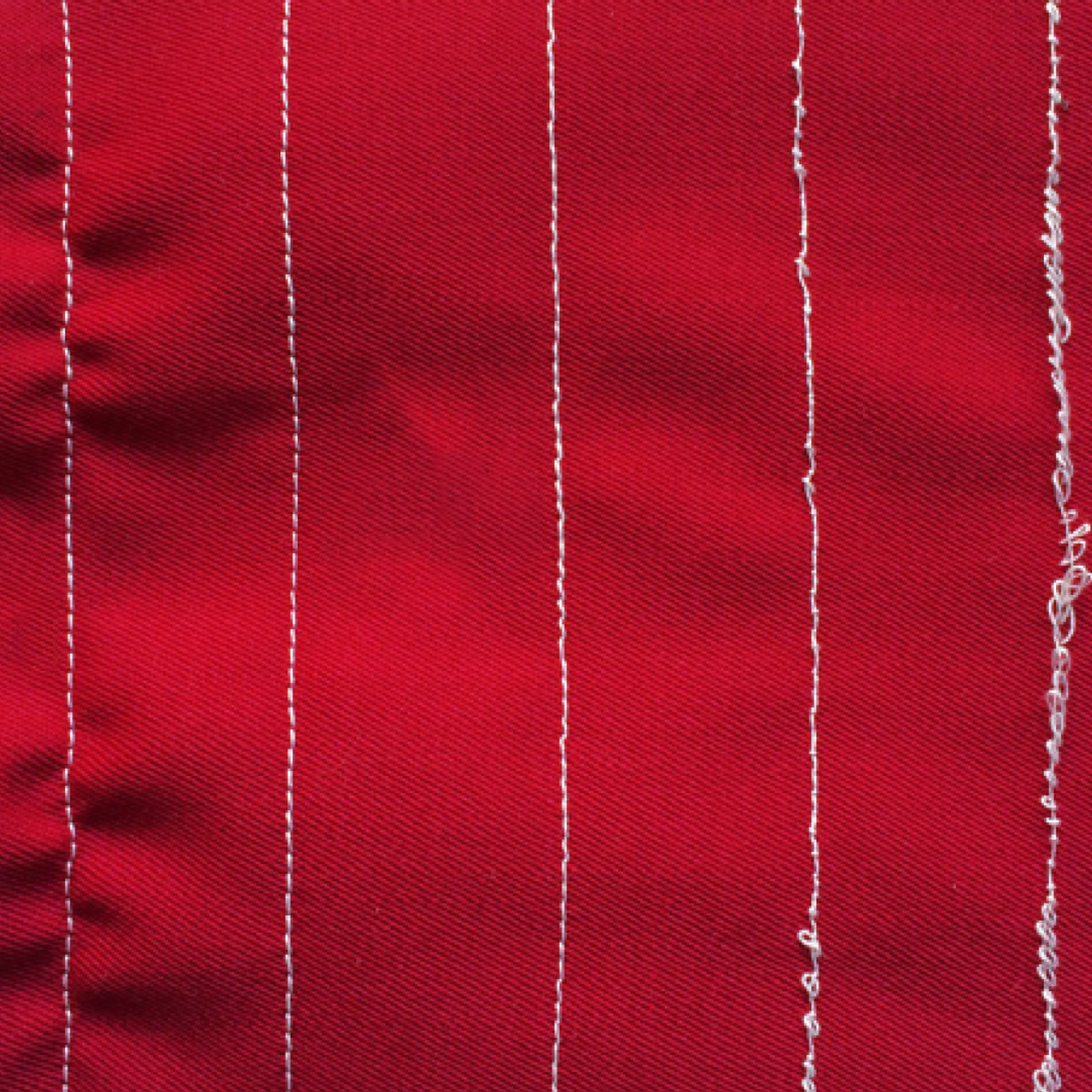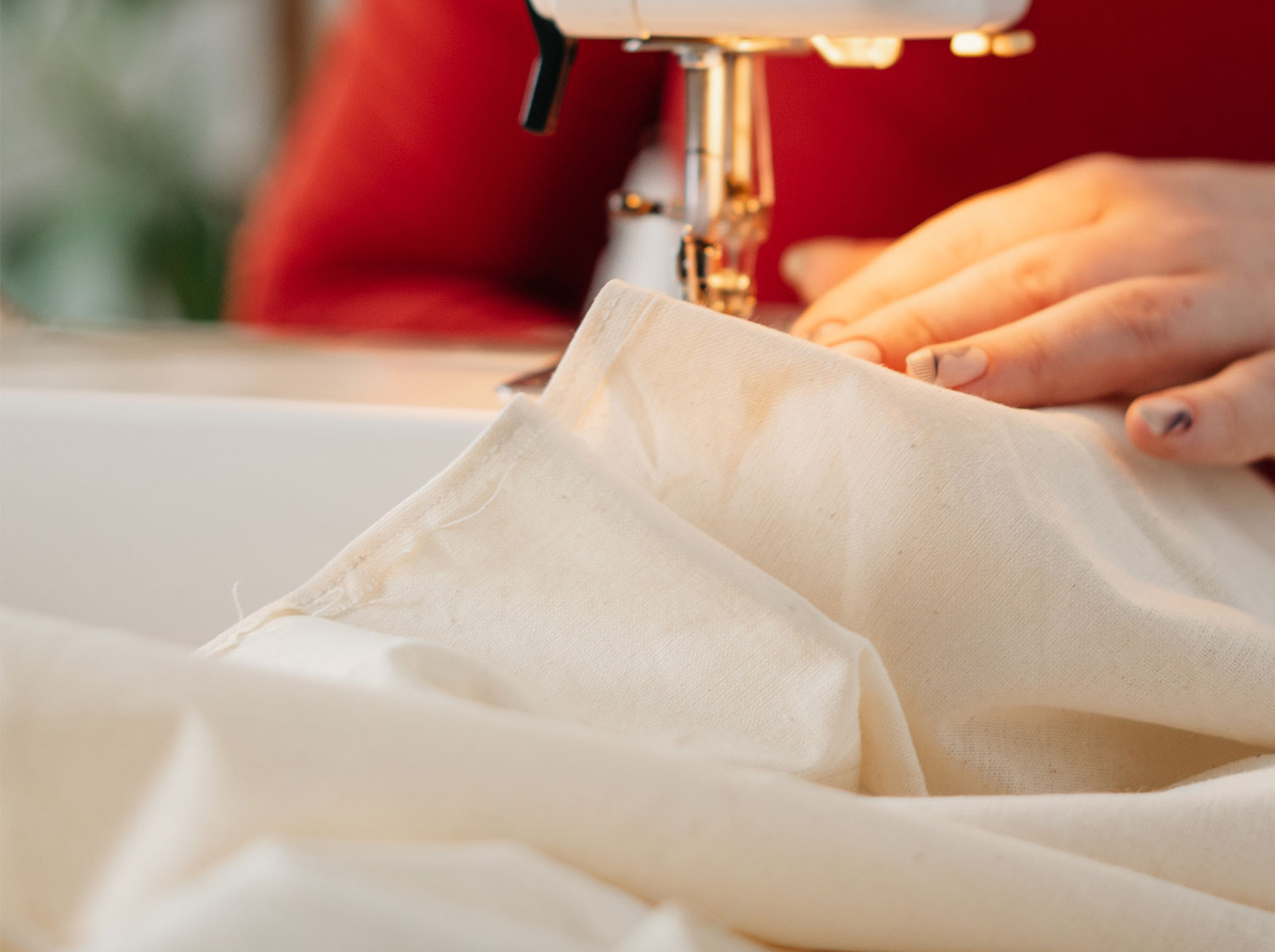
Sew, what are sewing machine tension issues?
Well, first we need to understand what thread tension is. This is the amount of thread that is pulled through a sewing machine to create a stitch. The more thread in a stitch, the looser the stitch is. The less thread in a stitch, the tighter the stitch is. The relationship between the top and bobbin threads in a machine should be balanced which creates properly formed stitches. If you have looping thread, bird nesting or thread snaps, try going through the checklist below to get back to sewing with perfect stitches on your sewing machine.

The Sewing Machine Tension Issues Troubleshooting Checklist
To help you troubleshoot common sewing machine tension issues, we have compiled a list of 6 things you can do when thread tension problems arise.
1: Changing your needle
Did you know changing the needle on your machine is one of the easiest ways to improve your sewing results?
If you’re experiencing sewing machine tension issues, we recommend checking you sewing needle. You should also make sure that you’re always using the right type of needle for your sewing project. E.g. Sewing with denim, use a denim needle to achieve the best sewing results.
Do you remember the last time you changed your sewing machine needle? It is recommended to change to a fresh needle every 6-8 hours of sewing. This will ensure your stitching stays nice and sharp!
Need some more needles? Check out our Sewing Machine Needles Range
Double check your thread
Now that you have a fresh needle, now is a great time to re-thread your machine to ensure it is threaded correctly. Even if you have just done it, give it another thread. It only takes a small pull on the thread in the wrong direction for it to come out of the thread paths. This simple check can help avoid many sewing machine tension issues due to improper threading.
In this step, it is also recommended to ensure you are using good-quality thread. Cheaper threads can result in more thread breakages and tension issues.
3: Matching the top and bobbin thread
If you are still experiencing some sewing machine tension issues, ensure you are using the same thread in the top and bobbin. Different weights and fiber content can also throw out the tension.
4: Cleaning your sewing machine
Has it been a while since you have cleaned your machine or taken it for a service? Now may be the time to refer to your sewing machine manual to clean out your bobbin area of any lint. It’s also a good time to book in a service with your closest SINGER® service technician.
Built-up lint and dust can also cause tension issues and regularly cleaning your machine and getting it serviced approximately every 12 months will aid in perfect stitching.
5: Issue upper thread too loose or bobbin too tight
If you are experiencing an upper thread that is too loose or your bobbin thread is too tight, adjust your tension dial to a higher number, until you achieve balanced tension.
6: Issue upper thread too tight or bobbin too loose
If your upper thread is too tight, or the bobbin thread is too loose, you need to adjust your tension dial to a lower number, until you achieve balanced tension.
If you follow the above checklist you should be on your way to sewing with perfectly formed stitches with great tension. If you still are still experiencing sewing machine tension issues and need assistance, be sure to reach out to our team. We are more than happy to help you!
